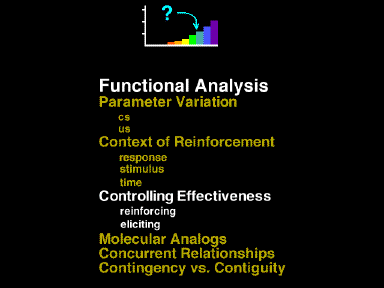 Slide 2-53
Slide 2-53

 Slide 2-53
Slide 2-53
The following slides illustrates an alternate way to measure the ability of clock stimuli to control responding. The two types of control refer to control by consequences (i.e., reinforcing) and control by antecedents (i.e., eliciting).
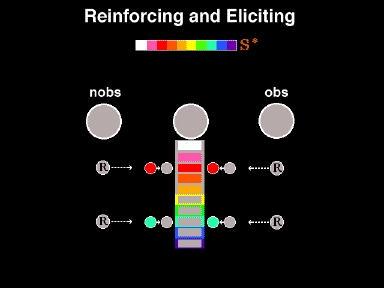 Slide 2-54
Slide 2-54
This slide portrays the procedure. Time passes from top to bottom with food presentation at the end of the stimulus sequence. The clock stimuli could be presented on the center key.
Pecks to the right "observing response," or "obs" key, turned on the stimuli. Pecks to the left "negative observing response," or "nobs" key, turned the stimuli off. The effects of these side-key responses is indicated for the third and eighth segment of the clock.
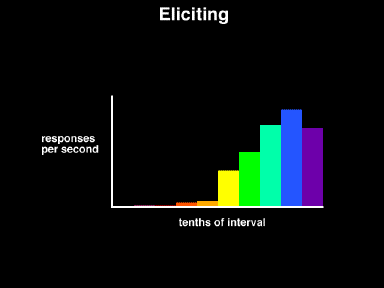 Slide 2-55
Slide 2-55
This figure portrays the distribution of responding to the clock key while clock stimuli were on. It indicates that stimuli later in the clock were more effective elicitors of pecking. It also systematically replicated previous research.
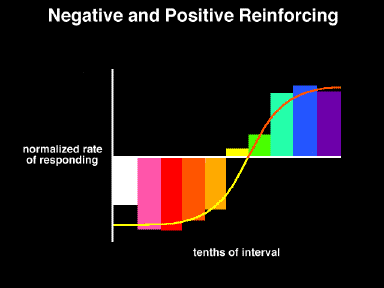 Slide 2-56
Slide 2-56
This figure portrays the relative amount of responding on each side key. The greater the deviation below the axis, the greater the relative amount of responding to turn off the clock. The greater the deviation above the axis, the greater the relative amount of responding to turn on the clock. As can be seen, there is a systematic shift from turning off the clock early in the interval to turning on the clock at the end of the interval.
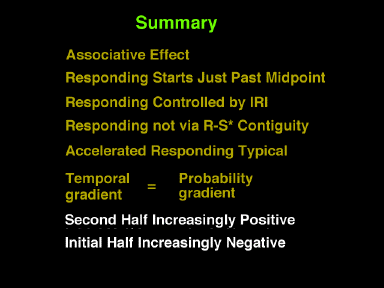 Slide 2-57
Slide 2-57
This slide adds this finding to the summary of the empirical results of the functional analysis of responding to clock stimuli.
Full text and figures of a journal article on this topic is available at:
***** BIPOLAR CONTROL IN FIXED INTERFOOD INTERVALS
Date Last Reviewed : May 26, 2003